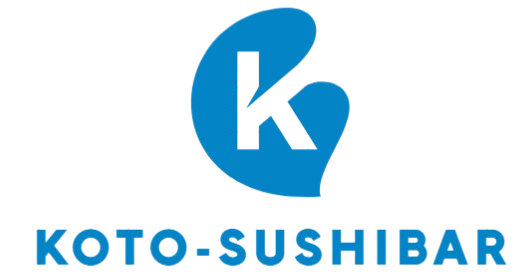How do you explain something as big as “mega personal” to a five-year-old? It’s like trying to describe the sky to someone who’s never looked up before. While it might seem challenging, it’s possible to break down complex ideas into simple, digestible pieces. This blog post is designed to help you do just that. We’ll explore how to make sense of “mega personal” in a way that even a young child can understand. Whether you’re a parent, caregiver, or teacher, you’ll find tips and ideas to make learning about “mega personal” fun and engaging. Get ready to enter a world where big ideas become small, understandable nuggets of knowledge!
Why It’s Important to Explain Big Ideas
Explaining big ideas to children is crucial for their development. It helps them become better thinkers and problem solvers. When kids understand complex things, they feel more confident. It’s like putting together a huge puzzle; each piece they fit into place helps them see the bigger picture. When children grasp challenging concepts early on, it excites them about learning even more. They begin to ask questions and seek answers. It’s not just about understanding “mega personal.” It’s about opening doors to a world of curiosity.
Kids are naturally curious, constantly asking questions. When you take the time to explain things to them, it shows that their questions matter. It fosters a love for learning that can last a lifetime. Each time you explain a new idea, it adds another tool to their mental toolbox. They learn to connect different pieces of information, making them better at figuring things out on their own. Plus, explaining big concepts in simple terms can improve your understanding too!
When kids learn to understand big ideas, they also learn empathy. By seeing different perspectives, they develop a better understanding of the world around them. It’s like looking through a window into other people’s lives. This understanding builds emotional intelligence, helping them to interact better with others. In short, explaining big ideas like “mega personal” can have a huge impact on a child’s growth.
Breaking Down “Mega Personal” for Kids

Imagine you’re standing on the edge of a big forest. You see lots of trees, animals, and streams, but it all looks overwhelming. That’s how “mega personal” might feel to a child. To explain it, you need to break it down into smaller parts, just like exploring one tree or one stream at a time. Think of “mega” as anything that’s really, really big. It could be a giant ice cream cone or a huge pile of toys. “Personal” is something that’s special just for them, like their favorite teddy bear or a secret handshake with a friend. When you put “mega” and “personal” together, it’s something big and special for them!
You can use stories to illustrate these concepts. For example, tell them about a character who has a superpower called “mega personal.” This power allows the character to have a big garden that only they can enter or a special cape that makes them feel powerful. These stories make abstract concepts relatable and fun. It’s like turning “mega personal” into a fairy tale where they are the hero.
Using everyday examples makes it easier for kids to relate. Explain that “mega personal” can be like their birthday party—a big event that’s all about them. Or it could be a giant cookie that’s made just for them. By relating it to things they know and love, the concept becomes less intimidating. Encouraging them to share what “mega personal” means to them can also spark their imagination.
Incorporating Mega Personal Into Storytime
Storytime is a fantastic way to introduce complex ideas to kids. You can make “mega personal” part of their favorite tales, adding a layer of excitement to the stories. Imagine telling them about a magical land called Mega Personal, where everything is huge and belongs to them! Use characters they love, like talking animals or superheroes, to bring this land to life. They can imagine walking through this place, interacting with its wonders. When they relate “mega personal” to fun stories, it makes learning seamless and enjoyable.
You can create interactive stories where kids participate in the adventure. Ask them questions like, “What would you do in Mega Personal Land?” or “How would you share your big treasure?” These questions make them think and engage with the story. They’re not just listeners but part of the storytelling process. It encourages creativity and helps solidify their understanding of “mega personal” through imaginative play.
Props and visuals can enhance storytime. Use toys, drawings, or pictures to depict Mega Personal Land. Show them what a mega-sized item looks like compared to something personal. Maybe it’s a drawing of a gigantic cupcake with a little flag saying “For You!” These visuals make the story real and tangible. Children can touch, see, and imagine as they listen, deepening their grasp of the concept.
Making Learning Fun and Interactive
Learning doesn’t have to be boring! When explaining big ideas like “mega personal,” incorporate games and activities. Turn learning into an adventure. For instance, have a treasure hunt where they find items that represent “mega” and “personal” around the house. Every time they find something, explain how it fits into the concept. This way, they experience learning as an exciting game rather than a task.
Crafts are another excellent way to engage children. Encourage them to create their version of Mega Personal Land using paper, glue, and colors. They can draw huge castles or giant teddy bears and explain why it’s special to them. As they create, they think deeply about what makes something “mega personal.” It also nurtures their creativity, allowing them to express themselves in new ways.
You can incorporate music or dance, too. Create a song about Mega Personal Land or a dance that represents being big and special. Music and movement make learning dynamic and memorable. Kids can sing along or move to the beat, reinforcing the concept in a fun and energetic way. When they associate learning with joy, they’re likely to remember and apply it.
Using Everyday Experiences to Explain Concepts
Everyday experiences hold the key to explaining big ideas simply. Relate “mega personal” to things they encounter daily. For example, next time you visit a park, point out the tall trees as “mega” and a cozy picnic spot as “personal.” These relatable examples help solidify their understanding. They learn that big concepts aren’t confined to books—they exist all around them.
Encourage kids to think about their personal experiences. Ask them what feels “mega” to them—maybe it’s a giant slide at the playground or a big family gathering. Then, discuss what’s “personal”—perhaps it’s their room or a favorite toy. By connecting these experiences, they begin to see how “mega personal” fits into their world. It becomes a concept they can identify and relate to.
Use mealtime to spark conversations about “mega personal.” Maybe a giant pizza represents “mega,” while their personalized drink cup stands for “personal.” Create opportunities for them to explore these ideas in everyday situations. It reinforces their understanding and shows them how learning can happen anywhere, anytime.
Encouraging Questions and Curiosity

When kids ask questions, it shows they’re interested and engaged. Foster this curiosity by encouraging questions about “mega personal.” Make it clear that no question is too small or silly. When they inquire about big concepts, it means they’re trying to make sense of them. Answer their questions patiently, using simple language and examples. This dialogue builds their confidence and critical thinking skills.
Create an environment where curiosity thrives. Encourage them to explore and wonder about everything. When kids feel safe to ask questions, they’re more likely to engage deeply with the material. It’s like giving them a map to explore the world of ideas. They learn that their thoughts and inquiries matter and that every question brings them closer to understanding.
Incorporate question-based activities. Play a game where they come up with questions about “mega personal,” and you answer them. Then, switch roles, letting them answer your questions. This back-and-forth exchange fosters an environment of curiosity and learning. It teaches them that questions are stepping stones to discovery and comprehension.
Building a Supportive Learning Environment
A supportive learning environment is crucial for explaining big ideas. Create a space where children feel comfortable expressing themselves. Whether it’s a cozy reading nook or a craft corner, make it inviting and encouraging. This space becomes their safe haven for exploration and learning. They associate it with joy and curiosity, making learning an enjoyable activity.
Consistency is key. Establish a routine where you explore concepts like “mega personal” regularly. It could be a weekly storytime session or a daily question-and-answer game. This routine builds anticipation and excitement. Kids look forward to these learning moments, knowing they’ll discover something new. It also reinforces the idea that learning is an ongoing adventure.
Encourage collaboration. Invite friends or siblings to join in learning activities. When kids learn together, they share ideas and perspectives. It enhances their understanding and makes learning social and interactive. They see that learning isn’t just an individual pursuit—it’s something they can enjoy with others.
Using Visual Aids to Enhance Understanding
Visual aids are powerful tools for explaining complex concepts. Use drawings, images, or videos to represent “mega personal.” Visuals capture kids’ attention and make abstract ideas more tangible. They can see, touch, and interact with the material. It bridges the gap between imagination and understanding, making learning more effective and enjoyable.
Create visual stories about Mega Personal Land. Use colors, shapes, and symbols to depict different aspects of the concept. Show them what “mega” looks like compared to “personal.” These visuals help them visualize and comprehend abstract ideas. It’s like providing a map to a new world, guiding them through the concept step by step.
Encourage them to create their own visual representations. Whether it’s a drawing, a collage, or a model, these creations reflect their understanding. It stimulates their creativity and helps them internalize the concept. They become active participants in their learning, taking ownership of their educational journey.
Incorporating Technology in Learning
Technology offers exciting ways to explain big ideas to kids. Use educational apps or online resources to explore “mega personal” in interactive ways. These tools make learning dynamic and engaging. Kids can explore virtual worlds or solve puzzles related to the concept. It adds an element of fun to learning, making it memorable and enjoyable.
Introduce multimedia content like videos or animations. Watch short clips that depict “mega personal” in action. These visuals captivate their attention and reinforce the concept. It’s like watching a story unfold on screen, bringing the idea to life. Video content can simplify complex ideas, making them accessible and relatable.
Encourage them to use technology creatively. They can create digital drawings or use apps to design their version of Mega Personal Land. It develops their tech skills while reinforcing the concept. When they engage with technology as a learning tool, they gain confidence in navigating the digital world. It prepares them for a future where technology plays a significant role in education.
Encouraging Imaginative Play
Imaginative play is a powerful way to explain big ideas. Encourage kids to create their own stories about Mega Personal Land. Provide props like costumes or toys to enhance their play. This imaginative exploration reinforces their understanding of the concept. They become storytellers, actively engaging with the material and making it their own.
Set up role-playing scenarios where they act out scenarios in Mega Personal Land. Maybe they’re the ruler of this magical place, making decisions about what’s “mega” and what’s “personal.” It encourages them to think critically and creatively. Role-playing helps them see the concept from different perspectives, deepening their understanding.
Incorporate imaginative play into everyday activities. During mealtime, pretend they’re dining in Mega Personal Land. Use storytelling to turn routine tasks into adventures. This approach transforms learning into play, making it enjoyable and impactful. When kids learn through play, they discover that education is a lifelong adventure.
Conclusion
Teaching young children about “mega personal” might seem daunting, but with the right approach, it can be a thrilling adventure for both you and the child. By breaking down big ideas, using interactive and engaging methods, and fostering a supportive learning environment, we can open the doors to a world of understanding. Through stories, visuals, play, and everyday experiences, children can grasp concepts that once seemed out of reach. Remember, every moment spent explaining these ideas is an investment in their growth and curiosity. Encourage them to ask questions, explore, and imagine. With these strategies, they’ll be well on their way to mastering the art of understanding “mega personal” and beyond.

